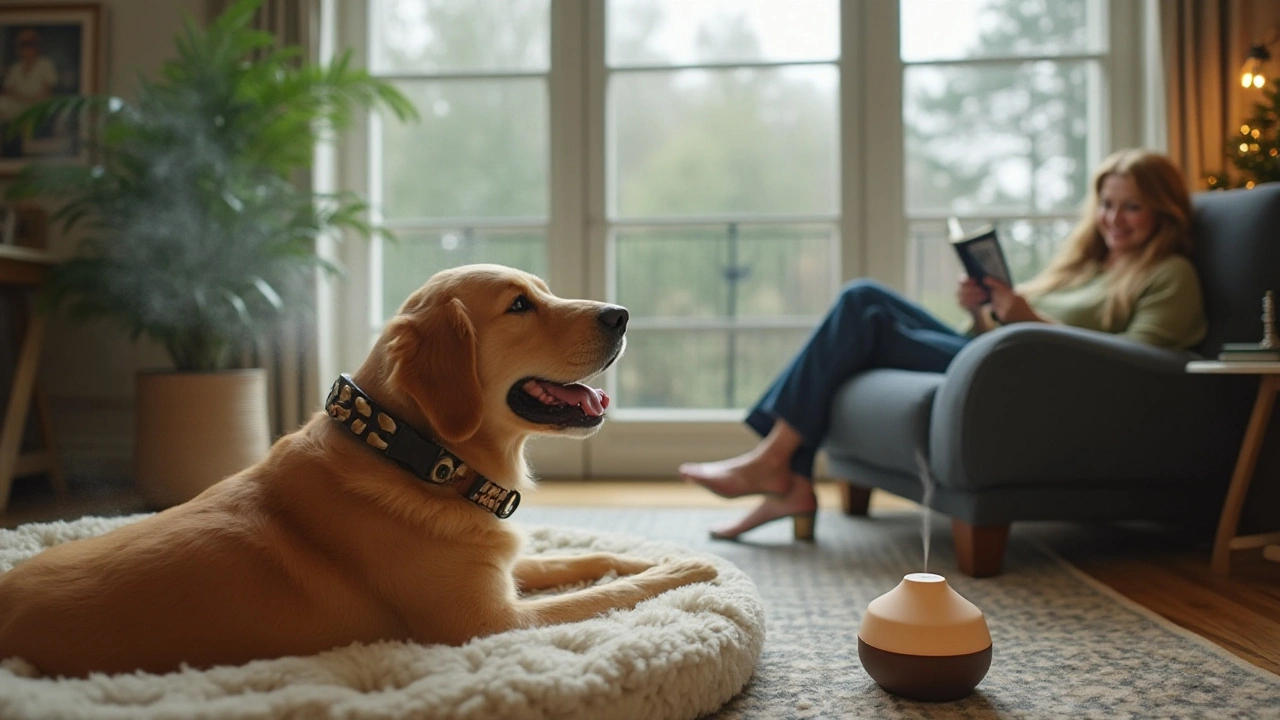Dog Calming Collars: How They Work & How to Choose
If your dog barks at the mail carrier, trembles during fireworks, or gets nervous on a car ride, a calming collar might be the simple fix you’ve been looking for. These collars aren’t magic tricks; they use proven science—like calming scents or gentle pressure—to help a dog feel steadier in stressful moments. The best part? You just clip it on and let it do its job.
What Makes a Calming Collar Effective?
Most calming collars fall into two categories: pheromone‑based and pressure‑based. Pheromone collars release a synthetic version of the dog‑comfort scent that mother dogs produce to calm their puppies. The scent stays close to the neck, where the dog can breathe it in all day. Pressure collars, often called anxiety wraps, apply a light, constant pressure around the chest or neck, similar to a hug. This gentle squeeze can lower heart rate and curb anxiety spikes.
Effectiveness depends on a few things: the dog’s size, the type of anxiety, and how consistently the collar is worn. A small terrier that gets nervous on vet visits may do fine with a pheromone collar, while a large retriever that reacts to thunder might need the added reassurance of a pressure wrap.
Choosing the Right Collar for Your Dog
Start by measuring your dog’s neck. Most brands list size ranges, and a snug but comfortable fit is key—too tight and it becomes a stressor, too loose and the scent or pressure won’t work properly. Look for collars that are vet‑approved or have solid customer reviews. Brands that share testing data or use vet‑recommended ingredients earn extra points.
Consider the scent source. Some collars use a single pheromone, while others blend calming herbs like lavender or chamomile. If your dog is sensitive to smells, pick a fragrance‑free option or test a small patch first. For pressure collars, check the material; breathable fabrics prevent overheating during long walks.
Price matters, but it’s not the only factor. A cheaper collar might run out of scent quickly, leaving you with a non‑functional product after a month. Mid‑range collars often last 60‑90 days, giving better value. Remember to rotate the collar if you notice your dog’s response fading—sometimes the body builds tolerance.
Finally, think about lifestyle. If your dog loves swimming, choose a waterproof pheromone collar. If they spend most time at home, a soft, washable pressure wrap works well. Matching the collar to daily routines helps the calming effect stick.
Once you’ve picked a collar, give it a trial period of at least two weeks. Watch for signs like slower breathing, reduced shaking, or fewer barks during known triggers. If nothing changes, you might need a different type or a supplemental training plan. Calming collars work best alongside basic training, a safe space, and regular exercise.
In short, dog calming collars can be a low‑maintenance tool to turn a jittery pup into a chill companion. By understanding the science, fitting it right, and choosing a product that fits your dog’s size and scent tolerance, you’ll see the difference in just a few days. Try one on, watch your dog relax, and enjoy a quieter house without the guesswork.
Posted By Bryndle Redding On 25 Nov 2024 Comments (0)
Do Calming Collars for Dogs Actually Work? An In-Depth Review
Calming collars for dogs are gaining popularity as a non-invasive solution to address canine anxiety. These collars typically use pheromones or essential oils to help soothe dogs in stressful situations. Pet owners are often curious if these products are truly effective in reducing their pets' anxiety and stress-related behaviors. This article delves into how calming collars work and their efficacy, while offering tips for selecting the right one for your furry friend.
READ MORE